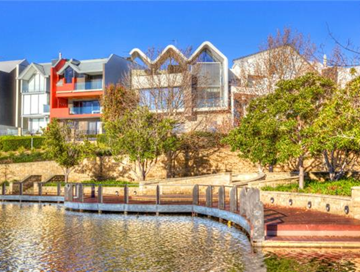With the increasing costs of land development and site acquisition impacting the average size of a building block, home owners are having to be savvier with how they maximise space on smaller blocks.
Building a two story home is one way of responding to a smaller block, while strata title developments are another. There are also some innovative housing designs that cater specifically to small block developments.
Boundary issues and small blocks
The critical ingredient for a successful small lot subdivision is the creation of level building blocks. Inevitably, this means greater attention on boundary issues like fences and retaining walls.
Local Councils have regulations that restrict the use of containing walls, particularly in conjunction with boundary fences. New subdivisions would need to comply with these regulations.
These regulations also have important implications for households planning to alter the level of their block in order to rebuild or renovate an existing property.
According to the Department of Local Government, the general common law rule is that the property owner who changes the level of the land is responsible for building a retaining wall to make sure there is no risk of earth movement.
This responsibility passes on to people who buy the property.
If both adjoining owners have altered the level of the land, then each adjoining owner will be responsible for the construction and maintenance of the retaining wall. A building license is generally required for this construction.
Parapet walls
Another important boundary issue for small lot developments is the construction of walls adjacent to lot boundaries, such as house walls or garage walls, commonly known as parapet walls.
These walls are built solely on one property under a building license and belong to the owner who constructed it. The responsibility for the building and maintenance of parapet walls lies with the owner of the land it is constructed on.
An adjoining owner is not permitted to interfere with a parapet wall by painting it or attaching anything to it without the owner's permission.
A parapet wall can divide adjoining properties but it cannot serve as an official dividing fence. This means both adjoining landowners can still legally require that an appropriate dividing fence be erected alongside the parapet wall.
Just 20 years ago, the average block size was around 800 square metres, while today it is around 696 square metres. This downward trend is likely to continue, so if you're thinking about building a home, it's smart to consider how best to utilise your block space.
.tmb-imgwidgetm.jpg?sfvrsn=fbb2a889_1)



.tmb-rcarousel.jpg?sfvrsn=d38b03f0_1)


.tmb-rcarousel.jpg?sfvrsn=b4b9111_1)


